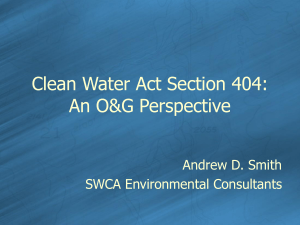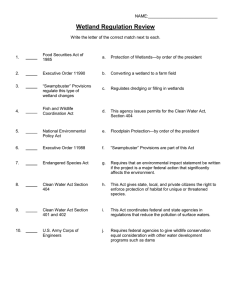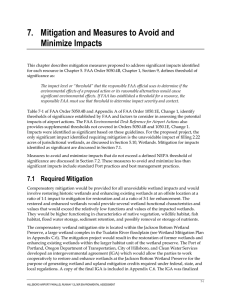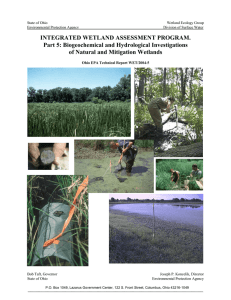Lame, Joan M. - A study of mitigation banking in the Upper Mississippi River region
advertisement
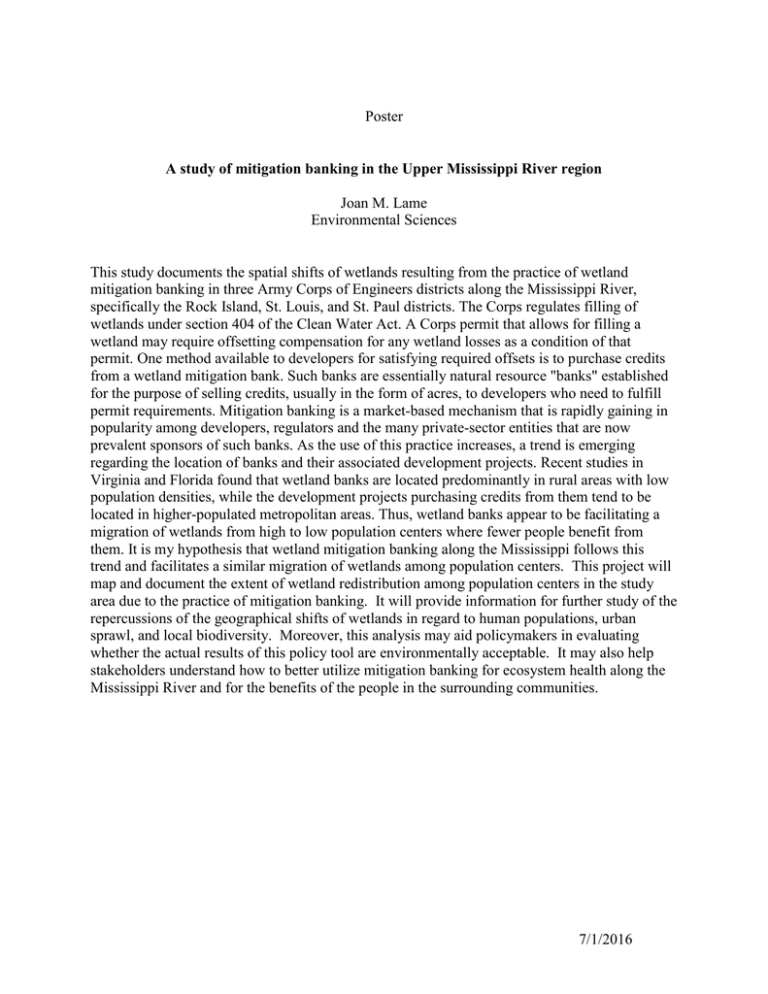
Poster A study of mitigation banking in the Upper Mississippi River region Joan M. Lame Environmental Sciences This study documents the spatial shifts of wetlands resulting from the practice of wetland mitigation banking in three Army Corps of Engineers districts along the Mississippi River, specifically the Rock Island, St. Louis, and St. Paul districts. The Corps regulates filling of wetlands under section 404 of the Clean Water Act. A Corps permit that allows for filling a wetland may require offsetting compensation for any wetland losses as a condition of that permit. One method available to developers for satisfying required offsets is to purchase credits from a wetland mitigation bank. Such banks are essentially natural resource "banks" established for the purpose of selling credits, usually in the form of acres, to developers who need to fulfill permit requirements. Mitigation banking is a market-based mechanism that is rapidly gaining in popularity among developers, regulators and the many private-sector entities that are now prevalent sponsors of such banks. As the use of this practice increases, a trend is emerging regarding the location of banks and their associated development projects. Recent studies in Virginia and Florida found that wetland banks are located predominantly in rural areas with low population densities, while the development projects purchasing credits from them tend to be located in higher-populated metropolitan areas. Thus, wetland banks appear to be facilitating a migration of wetlands from high to low population centers where fewer people benefit from them. It is my hypothesis that wetland mitigation banking along the Mississippi follows this trend and facilitates a similar migration of wetlands among population centers. This project will map and document the extent of wetland redistribution among population centers in the study area due to the practice of mitigation banking. It will provide information for further study of the repercussions of the geographical shifts of wetlands in regard to human populations, urban sprawl, and local biodiversity. Moreover, this analysis may aid policymakers in evaluating whether the actual results of this policy tool are environmentally acceptable. It may also help stakeholders understand how to better utilize mitigation banking for ecosystem health along the Mississippi River and for the benefits of the people in the surrounding communities. 7/1/2016
